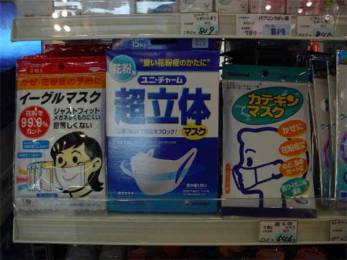
Healthcare, medicine & pharmaceuticals
Nano-based treatments
Nanotechnology is a disruptive technology and its impact on medicine will be no less significant than in other areas. An early example of the emergent technology is the use of nanoparticles to treat disorders ranging from rheumatoid arthritis to cystic fibrosis. It is very likely that the first area of nanomedicine to really take off will be cancer treatments due to the ability of nanopartricles to get inside the actual tumour cells and change them. Nanocapsules are already available for the treatment of ovarian and breast cancers but these only deliver drugs to the neighbourhood of cancer cells rather than to the individual cells, which will be the next development.
Ref: Technology Review (US), March/April 2006 ‘Nanomedicine’, J. Baker. www.techreview.com
Links: personalised medicine, nanotechnology
Search words: nanotechnology, medicine, nano-treatments
Cocaine vaccines
A private equity company called Celtic Pharmaceutical is pumping millions of dollars into a vaccine that it hopes will help cocaine addicts beat their addiction. Historically, cocaine addiction has been largely ignored by the pharmaceutical industry because it is a self-inflicted problem and because the market is relatively small. Moreover, insurance companies rarely, if ever, cover treatment for such addictions. However, according to the US National Institute on Drug Dependency, 2 million people in the US alone regularly use cocaine and as a result the Institute has allocated a quarter of a billion dollars (US) to fund cocaine research. Celtic Pharmaceuticals has US $250 million in funds under managements and aims to raise a further $250 million to buy late-stage pharmaceutical and biotech products or acquire the companies that are developing them. An early acquisition was Xenova, a UK-based company that develops vaccines including the cocaine vaccine. The vaccine in question works by attacking individual cocaine molecules – effectively mopping up the cocaine while it is circulating in the bloodstream – which has the effect of reducing the high experienced by the user. This, theoretically, breaks dependency. Two trials have already been conducted, one of which indicated that chronically addicted users decreased their cocaine consumption by 75 per cent. If other trials work and the treatment is allowed to be introduced, the market could be substantial because the base technology can also be applied to nicotine addiction and there are 70 million of nicotine addicts in the US alone.
Ref: Red Herring (US), 14 August 2006,’The final blow’, www.redherring.com
Search words: addiction, vaccines
Medical tourism
Americans spend over US$570 billion on hospital treatments every year so it’s not surprising that many of them are travelling abroad to find cheaper alternatives. This year alone, 500,000 Americans are expected to travel to countries such as India, Costa Rica, Brazil, Malaysia, Thailand, Turkey and Hungary to have everything from their teeth and hips to their hearts and noses fixed. Typical prices in these countries are 30 to 80 per cent below the US so medical tourism agencies and intermediaries are springing up to advise on hospitals and doctors, hotels, airlines and post-operative sightseeing itineraries. According to David Hancock, the author of a book called The Complete Medical Tourist, the new industry is predicted to be worth around US $40 billion by 2010. Many of the doctors in countries like India are trained in the US or Britain but the medical tourism industry is not licensed and insurance cover is weak to nonexistent if anything does go wrong. However, with escalating medical costs in developed markets the industry is certain to grow, especially for uninsured retirees and small companies that can no longer afford full medical benefits for their workers.
Ref: Business 2.0 (US), August 2006, ‘What’s Next: taking operations overseas’, www.business2.com
Search words: medical tourism, travel
Zap while you scan
The practice of using high-intensity ultrasound to kill tumours has been around for half a century. However, the practice, which involves focusing an ultrasound beam to heat tissues to up to 55 degrees centigrade, has a downside. It is difficult to see precisely what you are doing and if you’re not very accurate you will kill the surrounding healthy tissue. But there’s now a solution. By combining focused ultrasound with Magnetic Resonance Imaging (MRI) and 3D Computerised Tomography (CT) surgeons can now target precisely what they are seeing in real time rather than using scans that were taken prior to the procedure. The benefits of this technology, apart from accuracy, are that the procedure can take place on an outpatient basis and there is almost no post-operative pain because the practice is minimally invasive.
Ref: New Scientist (UK), 12 August 2006, ‘Zap-while-you-scan therapies set sights on cancer’, J. Marshall. www.newscientist.com
Search words: ultrasound, MRI, CT scanning
Permanent plasters
Scientists in the UK are working on a ‘digital plaster’ that will continually monitor all the body’s vital signs and, if anything appears abnormal, will wirelessly send the information to your doctor via Blue Tooth technology. The device – created by Toumaz Technology (a spin-off from Imperial College London) – uses a radical silicon chip that uses very little power, which allows it to operate off a printable battery. The ‘plaster’ includes a heart monitor and biochemical sensors to monitor everything from blood pressure to glucose levels.
Ref: The Times (UK), Body and Soul, 12 August 2006, ‘We may soon be permanently plastered’, J.Nash
www.timesonline.co.uk
Search words: plasters, monitors, smart plasters, remote monitoring
